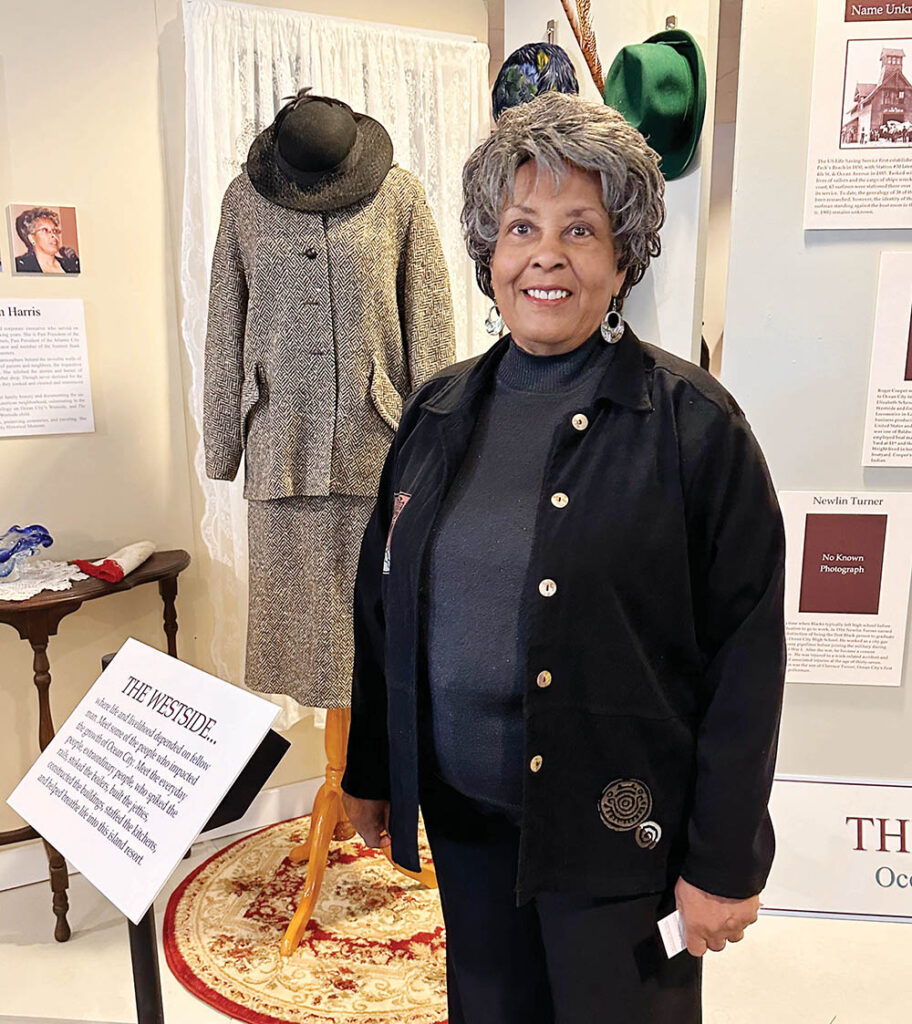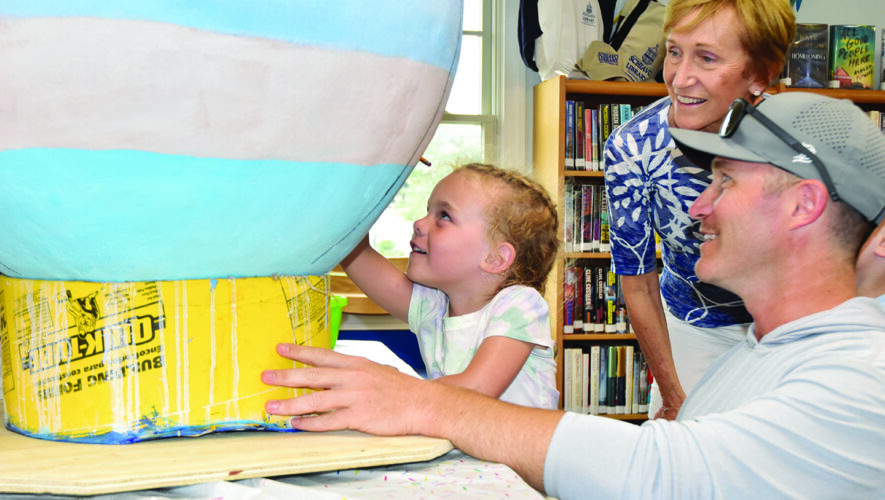
4th generation native publishes first of three books on history of people of color on this barrier island
See related story on this site.
OCEAN CITY — The Westside of Ocean City has been known as home to the resort’s African-American population, but the neighborhood and its residents have come with some misconceptions.
According to Loretta Thompson Harris, author of “The Westside: Ocean City in True Color,” some of the city’s first Black residents actually lived on Asbury Avenue, home to the city’s downtown business district, many of them were entrepreneurs and the Westside neighborhood was home to Italian-Americans and Native Americans as well.
The Westside boundaries are defined as Second to 10th streets and from West Avenue to Bay Avenue, but it never included the homes along the bay.
Harris said she gave the book its title “because I’m trying to dispel some of the myths about the Westside. I’m trying to give accurate information that I found in my research.
“People always say to me, ‘Where are you from?’ I’ll say, ‘Ocean City.’ They’ll say, ‘Where are you really from?’ I’ll say, ‘Ocean City.’ They’ll say, ‘Where did you move from?’ They can’t believe I’m from Ocean City. Other people of color have found the same thing,” Harris said. “I’m fourth-generation Ocean City.”
And then people will suggest her ancestors were servants.
“I thought, ‘How did they jump to that conclusion?’”
While some African-American residents were servants or domestic workers, Harris said many who came to the resort were entrepreneurs and started their own businesses.
“I identified 200 little businesses these people started when they came here,” the author said. Many were home-based businesses — “wherever they could find a little niche to make a dollar.”
“They were not all servants. There was a whole range,” she said. There were barbers and beauticians, construction people, carpenters and did rigging work.
“You name it, they did it,” she said.
One African-American man, John Tower, lived in Philadelphia and had a summer home in Ocean City. He owned 13 properties in the resort, Harris said.
That was one impetus for writing this book, the first of three she has planned on the history of people of color in Ocean City.
“There’s a lot of history,” she said, “things we didn’t even know. John Tower was referred to as possibly the wealthiest negro in the country and he was here and we didn’t know it?
“Then you have connections to the Still family. They’re known nationally. Books are written about them,” she said. (William Still was an abolitionist and conductor on the Underground Railroad.) Harris found three members of the Still family connected to the city.
Jacob Still opened the first saltwater taffy shop in Ocean City, in the Brower Building at Eighth Street and the boardwalk.
“I found his obituary in the newspaper. It was a long obituary for a person of color,” Harris said of Jacob Still. The obituary said he came to Ocean City in 1884; she found him in the 1885 census.
She also found ads in local directories that showed families who came in 1892 and 1893, opened little businesses and lived on Asbury Avenue, but over time moved to the Westside.
She said the formation of the neighborhood was based on segregation, both forced and self-imposed.
“I think it’s a combination,” Harris said. “When people come into an area, they’ll go to where they feel most comfortable, where they can afford to live, where they can find work. And where they will allow you to rent or buy. I suspect most of the people in the beginning were renters.”
Harris originally was focused on the African-American population but as she did her research she decided to change the title.
“I say people of color now because they’re not all African-American. There was a mix of people — Italian-American, Native American.
“In my research I found that it wasn’t just African-Americans that lived on the Westside. There also is a large Italian population,” she said, noting familiar names today such as Tedesco and Taccarino. “… There also are Native American descendants who were still on the Westside.” She said many Native Americans moved to the city in the 1920s and ’30s from Delaware.
First book of three
“I think I need three books to tell the story of the Westside community. Then I have another book that I call my memoir. It’s more personal. My story. I call it ‘Reflections,’” Harris said. She hopes she’ll be able to get to that memoir. She laughs and adds, “How much time and energy do I have here?”
But she needs three books “to get the story of this group told.”
The first one just published will cover the early history of people of color in the resort, those who arrived between 1884 and 1939.
She writes about dozens of families and what her research has uncovered. She also includes the four churches that were centers for the African-American community: Macedonia United Methodist, which came first; Tabernacle Baptist Church, which was second; St. James AME and then Shiloh Baptist.
Harris notes there were a few other churches that were built but didn’t survive.
“There is just that there is so much to tell. I was surprised at how much information I was finding once I started digging. The best part has been the personal interviews. I just had too much for one book,” Harris said. “I felt like people needed to have accurate information about the early people who came here.”
She focused on the early history first for a pragmatic reason.
“If someone doesn’t do this early history, we’ll all be gone and it won’t get done. I wish I started it 40 years ago. So many people have passed on.
“Superstorm Sandy just wiped people out. They not only lost their homes, they lost a lot of memories. Old Bibles, old pictures. Those things are gone forever. So I was trying to grab what I could of the early history to get that documented,” Harris said.
The author said her community’s population on the island has never been big. “Some people are surprised at how few people of color there were here,” she said, noting a chart in the Ocean City Historical Museum shows how the population is dwindling and is about 2.6 percent of the total population of the island. At its height, it was just over 9 percent.
As happens in other small communities, she said, kids graduate from high school, go off to college, find employment and don’t come back.
The author knew she had to act. “It’s rather sad because I began to realize that this history had never been documented,” Harris said. “Nothing was here. The community was dwindling. People were moving away, dying, passing away. And I felt like we’ll all be gone and no one will know we ever existed.”
Book signing and
reception Saturday
There will be a book signing and reception for “The Westside: Ocean City in True Color” at 2 p.m. Saturday, April 15, at the Ocean City Historical Museum in the Ocean City Community Center, 1735 Simpson Ave.
– STORY By DAVID NAHAN/Sentinel staff



